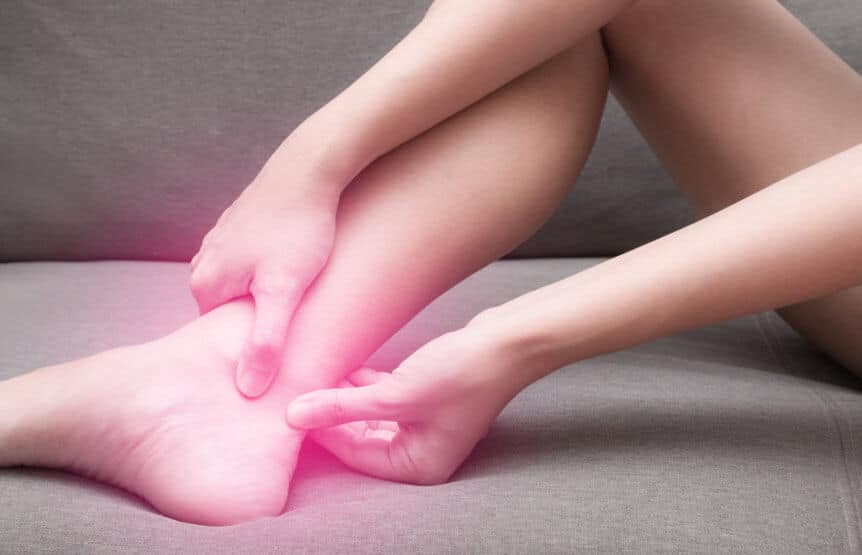
Achilles Tendinitis Pain Symptoms and Treatment Options
Share this Post
The Achilles tendon is the tendon that connects the two major muscles of the calf, the gastrocnemius and soleus muscles, to the back of your heel. These muscles are essential for walking, and allow you to push off with your foot or balance on your toes. Achilles tendinitis is a condition of inflammation caused by overuse of the foot by walking, running, or jumping.
Achilles Tendinitis Pain by Age Group
In younger age groups, Achilles tendinitis may result from an increase in activity, failure to stretch your calf muscles, running on hard surfaces, playing sports like basketball, which require a lot of jumping, or simply overdoing your running routine. Shoes without proper support can contribute to Achilles tendinitis. If your foot suddenly turns inward or outward while involved in an activity, this may result in injury and inflammation.
People who are elderly or middle aged may experience Achilles tendinitis as a result of a bone spur or a growth formation as a result of arthritic changes. A bone spur in the back of the heel is a constant irritant to the Achilles tendon.
Signs, Symptoms, and Treatments of Achilles Tendinitis Pain
Achilles tendinitis pain is found near the bottom of the foot. Achilles tendinitis often causes swelling as well. Your symptoms may include pain both in the heel and along the course of the tendon when you are walking or running. Frequently, the tendon is stiff in the morning and you may experience pain with palpation or movement. In severe cases, it will be difficult to stand on your toes.
If your physician suspects a bone spur, x-rays can diagnose the problem. If the tendon tears or weakens, your doctor may require an MRI.
Treatments for Achilles Tendinitis Pain
Simple treatment for Achilles tendinitis pain normally includes conservative measures, such as changes in your activity pattern. You should stop any activity that results in pain. If you continue to exercise, some activities like biking or swimming, will put less stress on your Achilles tendon.
When you come to our office for physical therapy services, one of our therapists will be able to help you with exercises that stretch the tendon. You may be advised to use a boot or brace to allow the tendon to remain immobile so it can heal. Some patients benefit from heel lifts placed in the shoe, to support the heel. Shoes that cushion the heel may be helpful.
In terms of medication, non-steroidal anti-inflammatory drugs that include ibuprofen or aspirin can help reduce inflammation. Ice applied to the area over the Achilles tendon should help if done regularly for 15 minutes two or three times each day.
Treatment plans for Achilles tendinitis often take up to 2 months to resolve. If conservative measures fail to resolve your symptoms, surgery is a possibility for removal of inflamed tissue, damaged tendon, or bone spurs. A more unusual treatment is extracorporeal shock wave therapy, using low dose sound waves.
The key to prevention of Achilles tendinitis is maintenance of strength and flexibility of the muscles of your calf.
Learn More About Achilles Tendinitis Pain Treatment
Contact our office at 888-521-0688 to learn more about how we can help treat your Achilles tendinitis pain or to schedule a physical therapy appointment. Our conveniently located offices can be found in West Orange, Aberdeen, and Lyndhurst.
As always make sure you like and follow us on Facebook and Twitter.
Dr. Jag Desai, M.D. is double board certified in anesthesiology and interventional pain medicine. He specializes in preventing and treating degenerative processes that can lead to conditions such as: back pain, musculoskeletal pain, cancer pain, neuropathic pain, complex regional pain syndrome (CRPS), minimally invasive spine procedures, and muscle spasticity. Read his full bio here.
